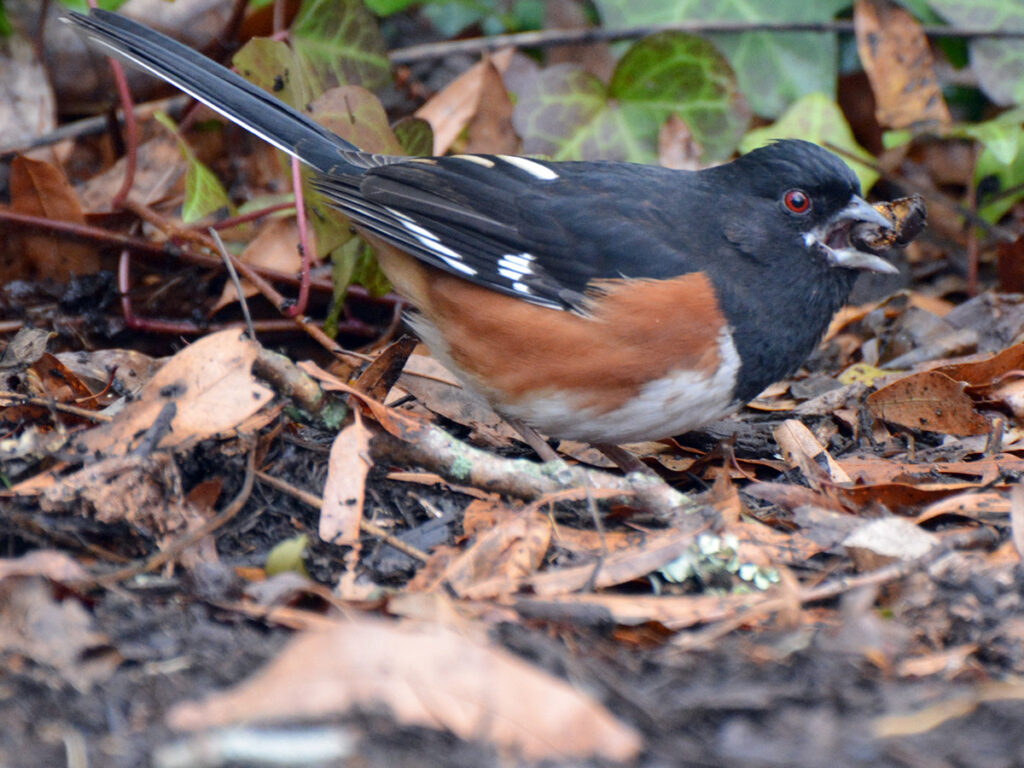
Although we’ve bought peanuts to offer birds (and chipmunks), we hadn’t thought much about planting trees or shrubs that provide nuts.
We spotted this towhee eating a willow oak acorn while visiting our children in North Carolina.
Natural sources of nuts
Even after reading Douglas Tallamy’s book Bringing Nature Home, and even after understanding the importance of native plants, it still took us a few years to fully appreciate the importance of trees and shrubs, some of which produce nuts.
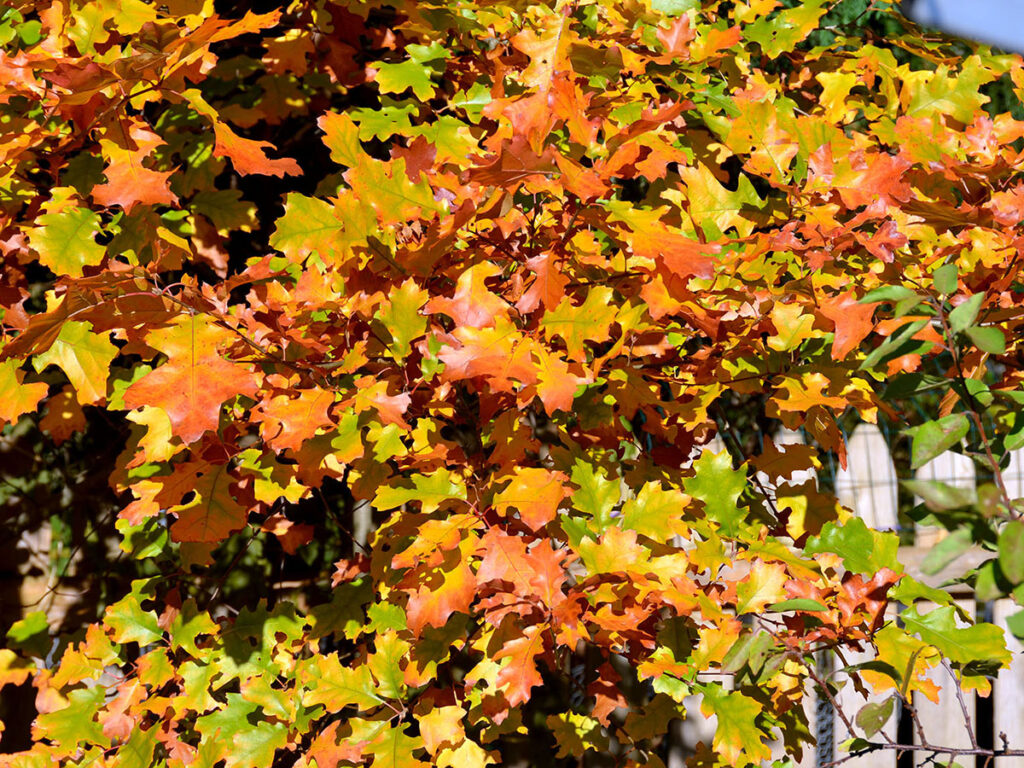
We planted a red oak (Quercus rubra) seedling at the back corner of our back yard near a black cherry (Prunus serotina) tree, so it didn’t have much room unfortunately.
We had a major limb cut off the cherry tree that had overhung the oak so it should be in better shape.
Yes, it’s close to our edible garden, but is unlikely to be a big problem (during the time frame we’ll remain in our house), especially since it’s sited between the morning sun and the garden, thus shading it only in the morning.
It will be a valuable larval host plant for moths and butterflies (and therefore insects and caterpillars as food for birds).

It’s a beautiful tree in all four seasons. Its green leaves in the summer and its brilliant red leaves in the fall are beautiful. And I especially like the color and metallic sheen of the dried up leaves throughout the winter, since oaks hang on to their leaves longer than do most trees.
Purchased nuts
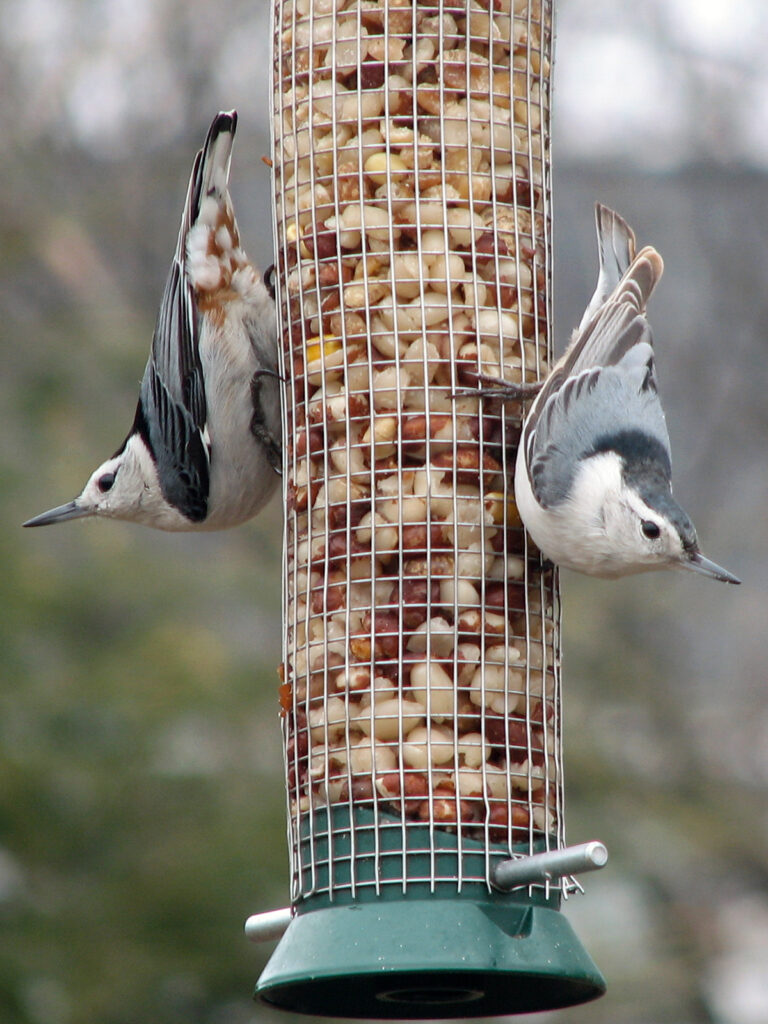
Although peanut kernels are pricey, one bag lasts quite a while, since they just pick at them through the mesh. I also break up peanut halves to put in a window feeder for the chickadees and titmice. These last quite a while, too. I only buy unsalted peanut kernels meant for human consumption since (I assume) there are stricter standards for wholesomeness.
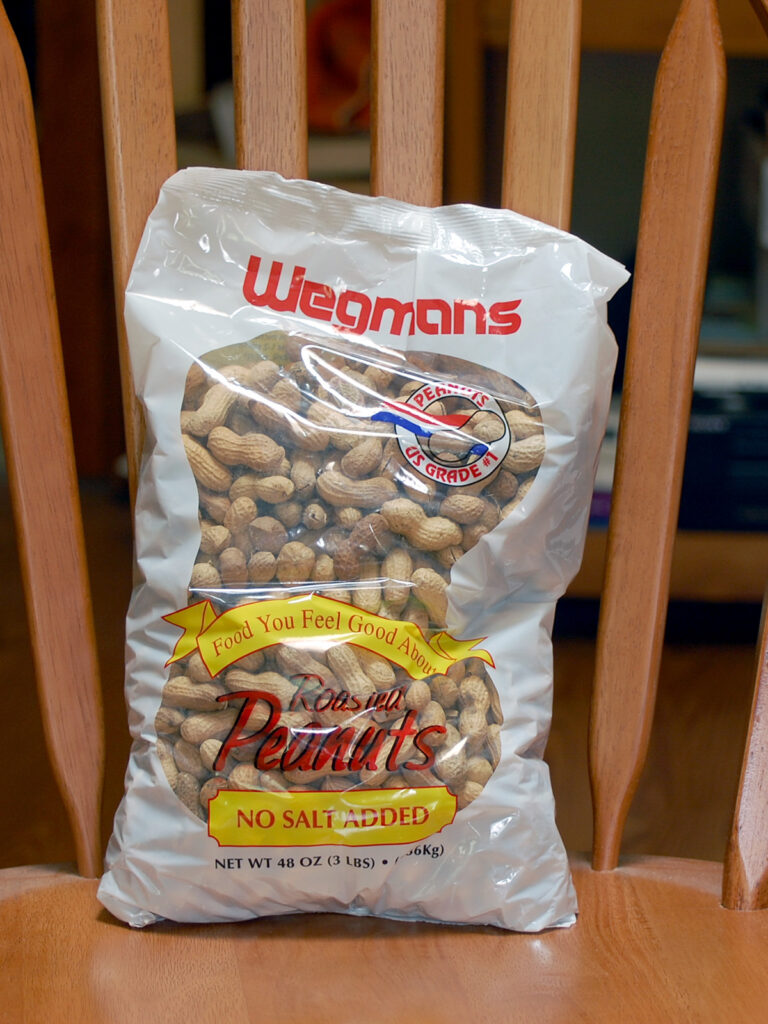
We also buy large bags of whole, unsalted for-people peanuts at Wegmans. Ironically, these seem to be no more expensive — sometimes even cheaper — than peanuts specifically sold for birds in home stores.
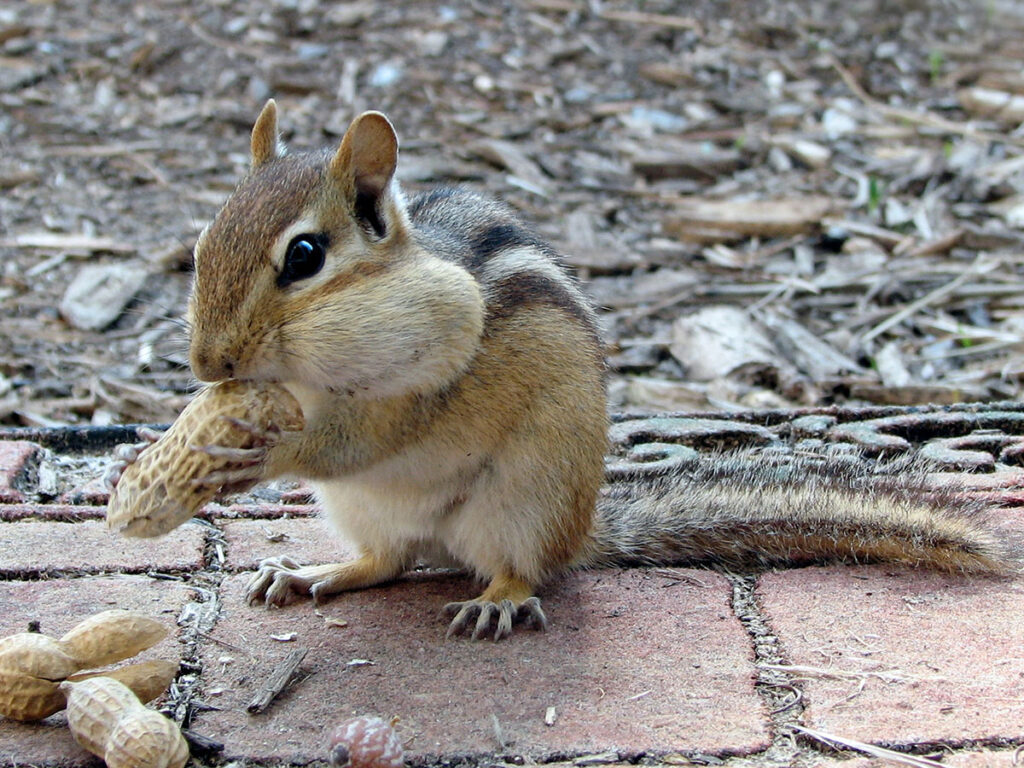
We also feed peanuts to chipmunks. It doesn’t take long for them to become accustomed to coming to the back door for peanuts.
They do have some annoying habits (such as digging in our vegetable garden), but we enjoy them.
We feed blue jays peanuts in the winter, but not during nesting season. Other birds (probably with good reason) don’t like blue jays around, and they promptly chase them. With all the other stresses of nesting season, we don’t want to encourage blue jays to hang around, adding to the stress of nesting birds.
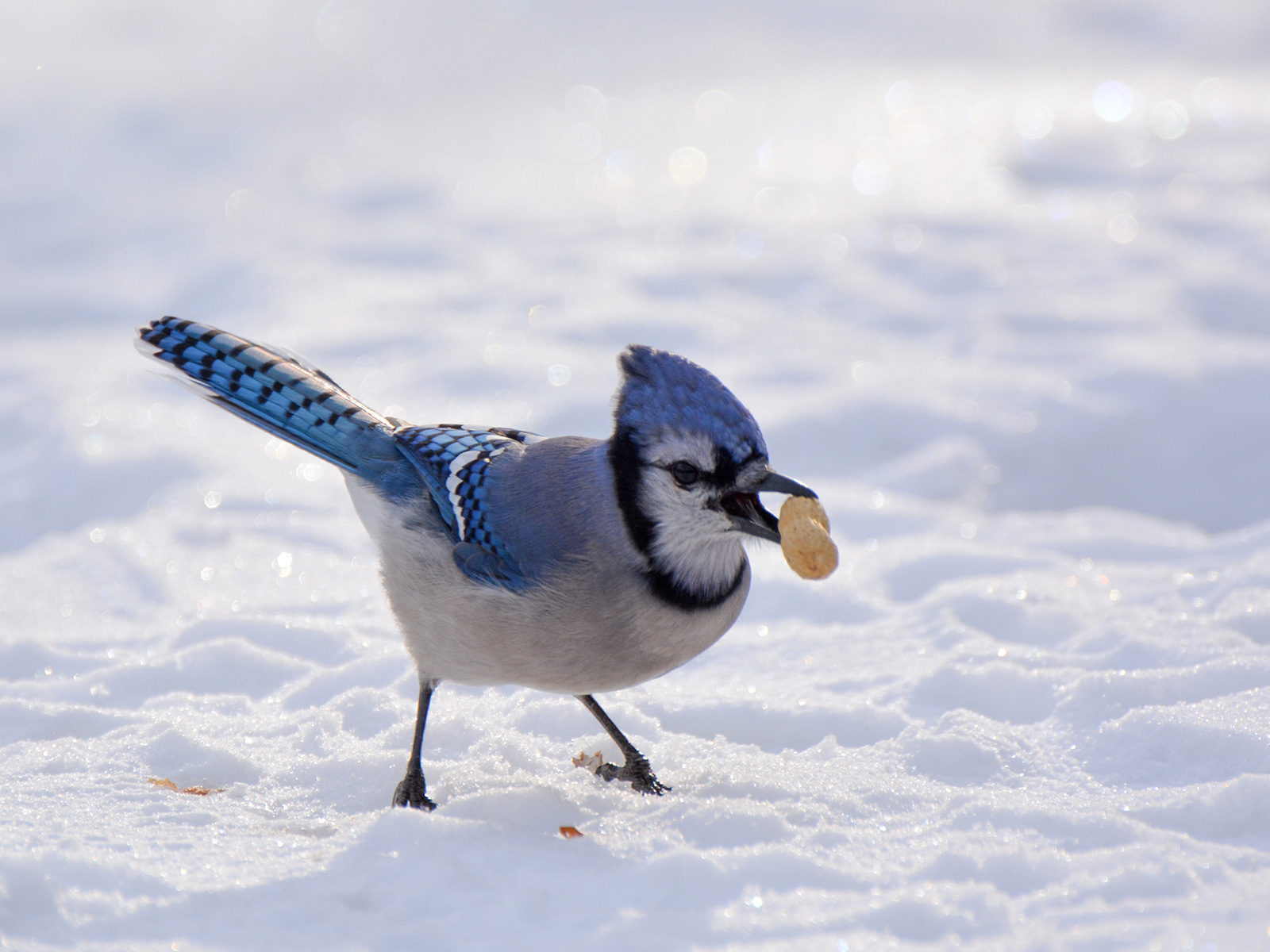
This tactic works if we stop feeding peanuts well before nesting season starts. After a few days, the blue jays go elsewhere, and after the season’s birds have all fledged, they rediscover our yard.
Reflections
Unfortunately, like corn, peanuts sold for animal consumption may be contaminated with aflatoxins, especially when sold in plastic bags or improperly stored. Until all peanut producers are required to screen peanuts sold for bird feeding for aflatoxins, we consumers should refuse to buy peanuts that might kill the birds we are trying to feed. Peanuts sold in grocery stores for human consumption have been screened and are safe for birds. Peanut hearts and kernels are often offered in mesh cages. Make sure the mesh is wide enough to allow the birds easy access to the seeds, and avoid painted ones— paint chips can be ingested.
~ Laura Erickson, 101 Ways to Help Birds, p. 149
